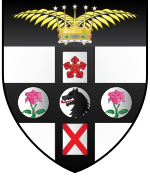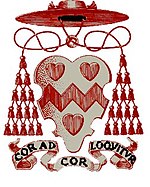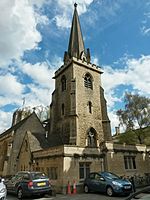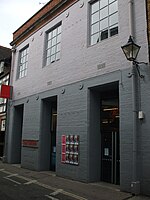Christ Church Cathedral School
1546 establishments in EnglandBoarding schools in OxfordshireBoys' schools in OxfordshireCathedral schoolsChoir schools in England ... and 6 more
Christ Church, OxfordChurch of England private schools in the Diocese of OxfordEducational institutions established in the 1540sPreparatory schools in OxfordshireSchools in OxfordUse British English from February 2023

Christ Church Cathedral School is an independent preparatory school for boys in Oxford, England. It is one of three choral foundation schools in the city and educates choristers of Christ Church Cathedral, and the Chapels of Worcester College and Pembroke College. It is a member of the IAPS and the Choir Schools Association.
Excerpt from the Wikipedia article Christ Church Cathedral School (License: CC BY-SA 3.0, Authors, Images).Christ Church Cathedral School
Brewer Street, Oxford City Centre
Geographical coordinates (GPS) Address Nearby Places Show on map
Geographical coordinates (GPS)
| Latitude | Longitude |
|---|---|
| N 51.7497 ° | E -1.2578 ° |
Address
Brewer Street 3
OX1 1QW Oxford, City Centre
England, United Kingdom
Open on Google Maps











